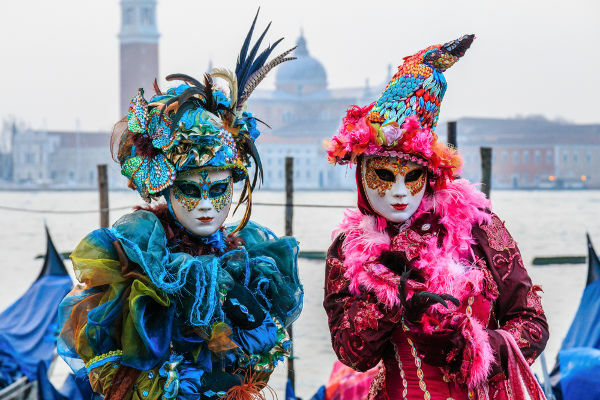THE Brazilian culture, as well as the ethnic formation of the Brazilian people, it's vast and diverse. Our cultural habits received elements and influences from indigenous, African, Portuguese, Spaniards, Italians and Japanese, among others, due to colonization, immigration and the peoples who have already inhabited here. Characteristic elements of Brazilian culture are popular music, literature, cuisine, traditional national festivals, such as the Carnival, and traditional local festivals, such as the Cavalcades of Pirenópolis, in Goiás, and the Festival of Parintins, in the Amazon.
Religion, as a cultural element, also suffered miscegenation, forming what we call religious syncretism. Brazilian religious syncretism brings together elements of Candomblé, Christianity and indigenous religions, forming a plural religious conception.

How was Brazilian culture born?
We can say that the older elements of genuinely Brazilian culture date back to indigenous peoples
who already inhabited the territory of our country before the arrival of the Portuguese in 1500. Owners of an extensive culture, the native peoples kept their beliefs and practiced their cultural elements allied to a simple way of life and in contact with nature.With the arrival of the Portuguese and the beginning of colonization, the european culture was introduced, by force, into the Indian people, and the missions of the Society of Jesus (formed by priests Jesuits) came to Brazil with the intention of catechizing the Indians.
In the 17th century, due to the large number of sugar cane mills, the Europeans began to capture and bring African blacks, by force, to Brazil, as slaves. These, tyrannically enslaved, brought with them elements of their culture and habits, such as African-based religions, their cuisine and their musical instruments.
In the nineteenth century, Brazil experienced another migratory process composed of italian workers who came to work in the fields of coffee, when the first signs of abolition of slavery already pointed at the Brazilian government. Other large, significant migratory flows took place during the Second World War, when Japanese, Germans and Jews sought refuge in Brazilian lands.
Do not stop now... There's more after the advertising ;)
All this vastness of peoples caused the formation of a plural culture and different cultures. Geographical differences also contributed to the Brazilian cultural process becoming plural and diversified.
If we take as an example the country music from the roots, we find in it elements that refer to country life. already the funk carioca speaks of life in shanty towns, where it came from. THE literature of twine, in turn, deals with recurring themes in the northeastern sertanejo, while the elements of gaucho life deal with the life of the peoples who settled in the South of the country, under the influence of Germans and Argentines.
Also access:Brazilian culture - from diversity to inequality
Habits and customs
You Brazilian customs are varied. In terms of morality, our influence is mainly based on Judeo-Christian morals. O Christianity constitutes the greatest influence for the formation of our people, mainly due to its catholic, which makes up the largest religious group in Brazil. We also suffered moral influences from other peoples who came to Brazil through migratory flows, such as the Africans.
The diversity of moral habits and customs was also due to the regionalisms that emerged over time. As it has a territory of continental proportions, Brazil has seen, throughout its history, the development of different cultural aspects, due to the geographical differences that separate the territory.
Thinking in culinary terms (cuisine is a valuable cultural element of a people), we have typical dishes and ingredients that come from indigenous culture, the northeastern states and the Midwest Brazilian, for example. While vatapá and acarajé are typical Bahian dishes of African origin, the inhabitants of thick consume peki, and the traditional cuisine of São Paulo is strongly influenced by Portuguese and Italian cuisine.
See too:June celebration
Influences
European influence

European culture is one of the main suppliers of cultural elements to Brazil. It was the Europeans who most migrated to the country. Cooking, parties, music and literature were brought to Brazilian territory, merging with other elements from other peoples. In addition to the popular culture of European countries, erudite culture was also brought in, an essential mark of the European intellectual and financial elites.
Indigenous Influence
![There are currently indigenous gatherings across Brazil, in which our native culture is promoted through exhibitions of dance, music, clothing, etc. [2]](/f/e50fda02a42b22ffadfb1f25473bcefc.jpg)
today we consume typical indigenous dishes, in addition to incorporating words from the Tupi-Guarani language family. Words like cashew, acerola, guarana, cassava and açaí have indigenous origin, in addition to the eating habit that we developed by eating these fruits and the cassava being born in the indigenous culture before the arrival of the Portuguese.
African influence
![In Brazil, Iemanjá Day is celebrated, for the most part, by devotees of Candomblé and Umbanda. [3]](/f/7b06fd11b87857c8639d129216ad087d.jpg)
Africans brought their religious practices expressed today, mainly, by Candomblé and Umbanda, which mixes elements of Candomblé with Spiritism Kardecist. They also brought typical dishes from their regions and developed here dishes inspired by what made up the African cuisine of the places they came from. Another cultural brand that we inherit from Africans is the capoeira, practiced to the present day.
Know more:Difference between Candomblé and Umbanda
current Brazilian culture
Currently, Brazilian culture suffers from several influences in addition to those roots mentioned in the previous topic. The current Brazilian culture is strongly influenced by the elements of the cultural industry. In addition to these factors, there are others arising from the culture produced in the suburbs, which are not necessarily the result of the cultural industry.

Today, we can list the hip hop it's the funk as elements that drive current Brazilian culture, beyond the mass culture produced by the cultural industry. In these cases, we can relate these elements to a authentic culture, produced by the periphery and for the periphery, being often confused with the elements of the cultural industry or incorporated by them.
Some 20th century cultural elements also resist and they stand out as factors that still influence current Brazilian culture, such as carnival, which moves a large part of the Brazilian population between February and March of each year.
Examples
- Popular culture
- country culture
- Midwest Culture
- southern culture
- northeastern culture
- northern culture
- Brazilian folklore
- Samba
- Literature of twine
![Cordel literature is an example of a genuinely Brazilian cultural element. [1]](/f/5be6386c21055bc4f9f18fd4b6d2c309.jpg)
Summary
Brazilian culture is vast and diverse. If we consider Brazil today, our culture can branch out into hundreds of axes, coming from the various cultural centers established in all states of all Brazilian regions.
The Brazilian cultural vastness is due, firstly, to the fact that various peoples migrated to our country in different flows and, secondly, by the large Brazilian territorial dimensions, which characterize us as a country of continental proportion that has different climatic and geographic conditions each other.
These differences present within our territory and the combination of different peoples strongly contributed to the plural formation of our culture.
Image Credit:
[1] Alekk saucer / Shutterstock
[2] Erica Catarina Pontes / Shutterstock
[1] Marcio Jose Bastos Silva / Shutterstock
by Francisco Porfirio
Sociology Professor

